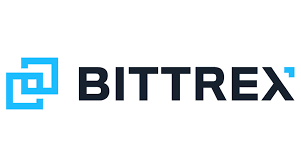Cryptocurrency is an encrypted, unregulated digital asset that is used as a counterpart to currency in exchange transactions. Cryptocurrency has no material form; it exists only in the electronic network in the form of data. An exchange via cryptocurrency happens in much the same way as an exchange of emails, hence a much shorter processing time than a bank, minimal commissions, and the absence of an intermediary.

Accounting for a cryptocurrency is called a blockchain, and it is conducted collectively by all network participants who have this currency. Every cryptocurrency is programmed and identified using a complex code.
Bitcoin is not the only cryptocurrency, but the first in history and the most famous. Unofficially, Bitcoin is already called “digital gold”. An important aspect of cryptocurrency is the technology on which it is based. It is she who determines the safety of operations. With a sufficient number of participants, the turnover of operations in cryptocurrencies can reach billions of dollars, but so far, investors and ordinary users are just beginning to explore this niche.
In addition to Bitcoin, there is a whole group of so-called “altcoins” that is likewise actively growing. Among the leading altcoins are Litecoin, Ripple, Ethereum, and Dash.
Basic concepts
It is better to start your acquaintance with the world of cryptocurrencies by choosing a strategy. The main ones are investing or trading. The first indicates the acquisition of an asset and long-term storage. The second is short-term speculation. A trader makes multiple transactions with digital assets, trying to make a profit in a short period.
The methods of storing cryptocurrency differ depending on the chosen strategy. For investments, cold wallets are better suited. Thus, you can keep cryptocurrency on a computer or USB flash drive. Also, no one can steal cryptocurrency without direct access to it.
The downside is illiquidity. If suddenly the coin rate begins to decline sharply and the user wants to sell it, it will take time to transfer assets to the trading platform. In addition to this, you can emotionally indicate the wrong address when sending funds, which will lead to their complete loss without the possibility of recovery.
Exchanges are best suited for trading digital assets. On them, the client can sell or buy the cryptocurrency at any time, as well as use additional options. For example, leverage, with the help of which additional capital can be taken into management. However, this is extremely risky, as there is a possibility of losing all funds very quickly.
On some exchanges, you can also deposit cryptocurrency or use the staking function. It allows you to receive passive income for storing coins. However, holding funds on trading floors is risky. They can go offline at any time due to a malfunction, be hacked, and funds, accordingly, stolen. There have been cases when unscrupulous company employees embezzled client funds. More details on how to store cryptocurrency, we talked about in another article.
When the decision is made, all that remains is to purchase the cryptocurrency itself. Large trading platforms allow you to do this through payment systems such as PayPal, Yandex.money, and others, as well as using bank cards.
Cryptocurrencies can also be bought through exchanges and then transferred to an exchange or cold wallet. However, this method is not safe either. There is a risk of using the services of scammers or entering incorrect data when sending funds. If this happens, there is a 99% chance of losing the cryptocurrency. But, if you find yourself in such a situation, be sure to write to the technical support of the service. Employees will likely meet halfway and, if possible, help to recover the loss.
Directly trading
Trading digital assets is an extremely risky craft. The price of cryptocurrencies is elastic, it can fluctuate by 10-20% per day, sometimes by 50% or more. For example, on March 12-13, the bitcoin price fell from $ 8100 to $ 3800. In this regard, inexperienced users may receive the impression that trading can gain huge profits almost every day. However, practice shows the opposite, as a rule, 90% of newcomers lose most of their capital in the short term and leave the market.
For this purpose, it is better to start trading cryptocurrency with a practice account. Some exchanges enable you to create an account with a virtual balance. This will allow you to get acquainted with the market and the structure of the trading platform, and practice.
Then you can deposit a small amount on the exchange. Losses are inevitable, but this is an obligatory stage in becoming a trader. A beginner should know what it is like to lose money and hold a losing position. This will help the user understand his psychology: is he able to suffer losses and not make panicky, erroneous transactions, control himself and make decisions with a cool head. It is better to acquire this skill in advance, without paying large sums for such experience.
Besides, you should turn to theory. For instance, read scientific literature on trading, listen to lectures on this topic, take suitable courses, and get acquainted with technical and fundamental analysis. All this will help not only to see the ups and downs of asset prices on the charts but also to try to predict them.
By studying the literature and experience of other traders and investors, you can also examine different trading strategies. One of these is averaging. It involves dividing the capital into several parts and investing in an asset in small amounts. This method will help you find the optimal point of acquiring an asset.
Averaging is a basic and probably the simplest strategy. In addition to it, there is also trading from levels, catching “lumbago” and “false breakouts” and others.











